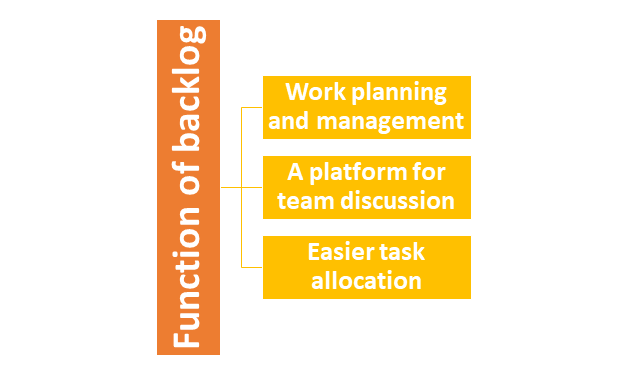What is meant by backlog?
Backlog stands for the build-up of incomplete work. The term backlog is used in finance and accounting; however, the usage of the term is dependent upon the circumstances. For example, the sales order that is yet to be processed or a loan application whose paperwork is yet to be completed.
Chiefly, when the current workload surpasses the present production capacity of an organisation, it is known as backlog. It can have both negative and positive affect, depends upon the company’s situation.
The term is mainly used by the fabrication and construction industry, for denoting the difference in the workload and the production capacity.
Backlog can be seen as a positive indication, as it shows the growing product demand and eventually increases in sales. Backlog can be depicted negatively as well, as it implies that the production capacity is inefficient to meet the growing demand.
Backlog can impact the earnings of a limited public company and in a result affecting the shareholder’s value. Therefore, the presence of backlog can depict the lack of a company able to fulfil the demand or process the orders.
Summary
- Backlog stands for the build-up of incomplete work.
- When the current workload surpasses the present production capacity of an organisation, it is known as backlog.
- Backlog can impact the earnings of a limited public company and in a result affecting the shareholder’s value.
- The presence of backlog can depict the lack of a company able to fulfil the demand or process the orders.
Frequently Asked Questions (FAQs)
What is the importance of backlog?
A changing company’s backlog may represent the changing profits. For example, an increase in the backlog indicates an increase in the sales or inefficiency of the production department. Similarly, a decrease in the backlog can be interpreted as a decrease in the sales or an increase in the production capacity to meet the current demand.
Companies have different revenue recognition policies, and it is crucial to investigate the same while evaluating the company’s backlog. A company might identify the revenue on the basis of the work completed, where the revenue is anticipated by evaluating the measuring the work completed. Another company might deploy contract accounting, where the revenue is recorded in the books after the completion of the project as the cost cannot be recognised at different stages of production.

What is the working of backlog?
A backlog is generally recorded when a shortage in supplies or labour is reported. They are generally recorded in terms of the dollar. Product customisation can also result in the backlog.
For instance, a company’s present manufacturing capacity is 1000 units of the product daily. One day, they receive an order of 6000 units which must be delivered the next day. Then the company will be able to deliver only 1000 units and will show a backlog. Assume that each product costs $10, then the company will record the backlog of $50,000.
An example of backlog in finance and accounting
In October 2017, Apple gained a lot of criticism after the launch of the iPhone X on its 10th anniversary. Initially, the product demand was overwhelming and resulted in week-long backlogs. With increasing pre-orders, the shipment was delayed till November and December. The backlog aroused due to inefficient demand forecasting. Apple encountered a similar situation in 2015 when the apple watch was launched.
During the housing crisis of 2008, lenders encountered the situation of backlog as they had huge residential property inventory which they had to get sell and get out of their books. Since the properties were going into foreclosure at a high rate, the lenders were not in the capacity to match the pace and process the foreclosure in stipulated time. Due to backlog, many lenders were living in their houses without making any payment to the lenders. Only after the clearance of the backlog, the recovery process took place.
What is the meaning of backlog in product development or management?
Backlog stands for the list of the tasks which are required to be fulfilled for meeting the larger strategic plan. The backlog specifies the priority tasks. The highest-ranked tasks are the important and urgent tasks that the team has to complete.
What is the importance of backlog for the managers?
The product managers are responsible for creating a product roadmap by strategically investigating the market and understanding their product. Before the product is introduced, it is necessary that product manager converts their goals into task-oriented actions. Here, backlog helps in prioritising the tasks and meeting the market demand.
What is the function of backlog?
- Work planning and management – By employing backlog, the cross-sectional teams are informed in advance about their work and what work to take up next after the completion of a task. The plan represented is agreed upon in advance by the management.
- A platform for team discussion – Every item listed on the backlog, might not be fully fleshed out and team members cannot work upon it. These types of task are mentioned at the bottom and indicate that these tasks are yet to be prioritised which facilitates discussion between the teams.
- Task allocation becomes easy – Since the tasks and their priority is already written down, it becomes easy for the management to allocate priority tasks to the teams and manage the workload along with the productivity.

Image Source: Copyright © 2021 Kalkine Media
What is sprint backlog?
The companies which utilise the agile framework for product development, divide the work into short time blocks for manufacturing the product, known as sprints. The short time blocks are generally months or weeks and team work on the limited stated tasks.
Like the general backlog, the team pulls out tasks from the sprint backlog for meeting product development goals.
How to identify or control the black hole in the backlog?
To identify and control backlog, backlog grooming is suggested. Here, the cross-sectional teams can-
- Break down complex tasks into small, simple, and actionable tasks.
- Review the items and discuss the role of the product in meeting the company’s goal or vision.
- Clarify the doubts of the team regarding any item on the list.
- Ensure that the list is updated on regular basis and can be understood by the team.
The grooming session should be conducted at regular intervals as it provides the opportunity to take input from all the teams involved in the project.
 Please wait processing your request...
Please wait processing your request...